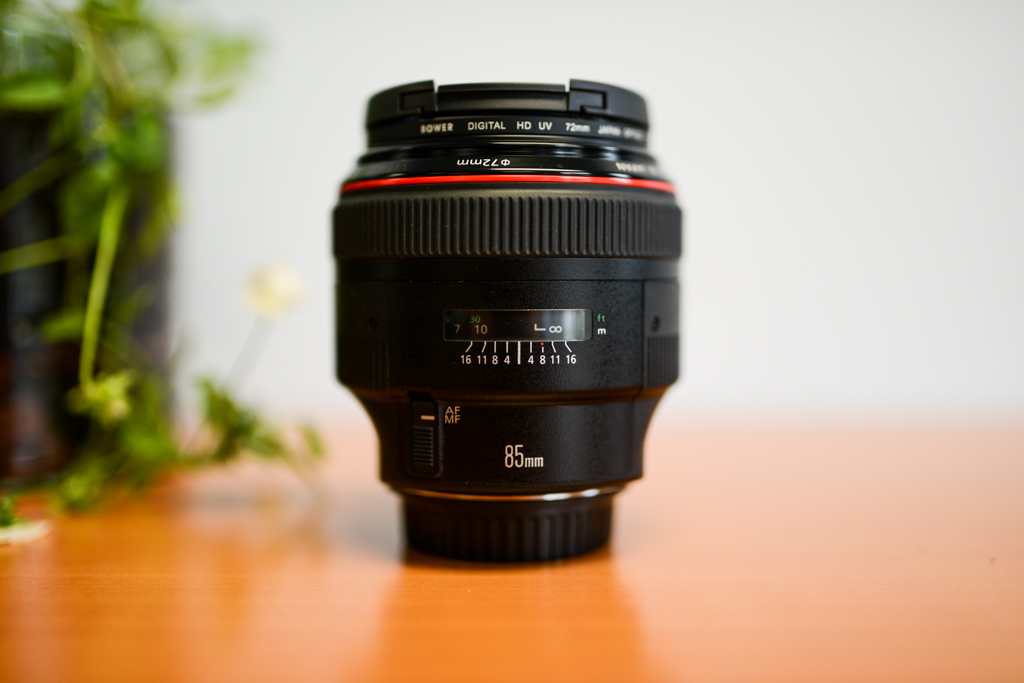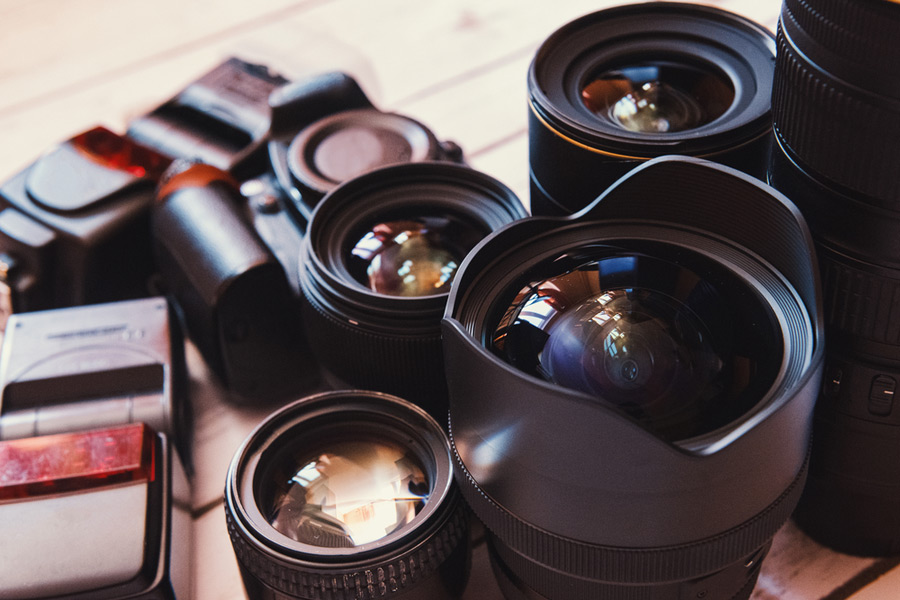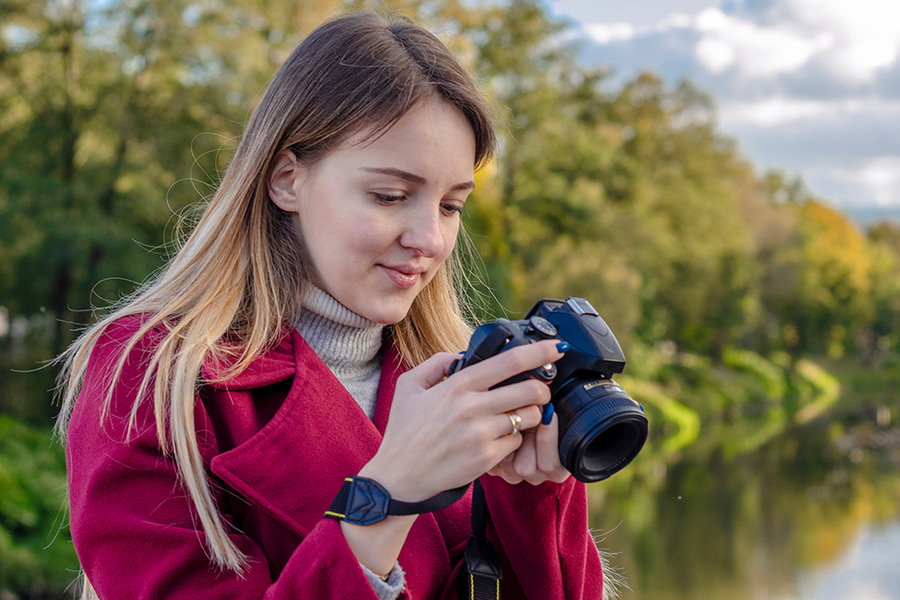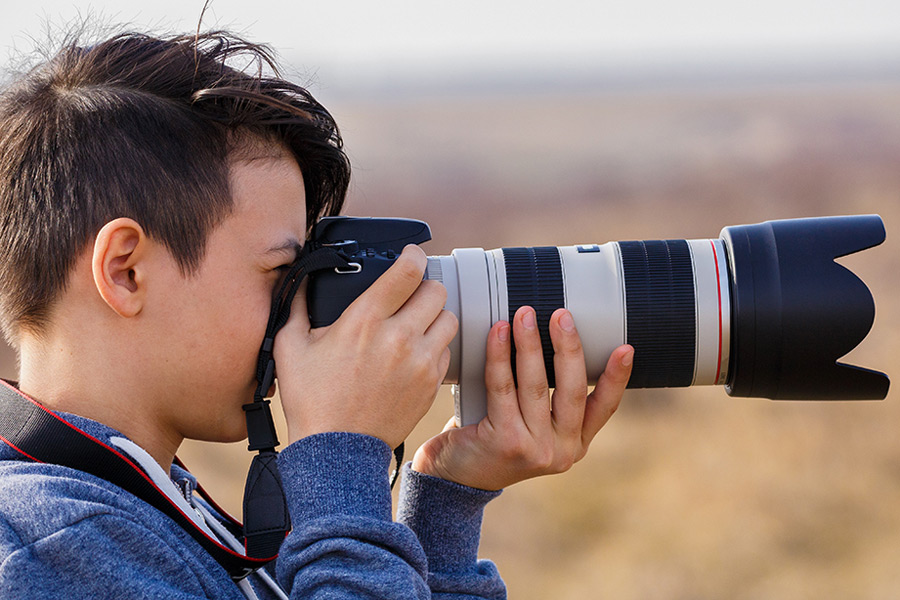We’ll break down the types of camera lenses out there and how can you use each of them to shoot better photos. Let us know your thoughts and how you can use each Camera Lens in your own photography!
Table of Contents
Prime Lens

Prime Lens provides a fixed focal length. If you have a 24mm Prime Lens, you will only shoot in 24mm. The Prime Lens is most commonly used in situations when the subject is mostly stationary and you, the photographer, can move around. These include Portrait, Wedding, Landscape, and Streetscape.

Prime lenses differ from the more commercially popular zoom lenses. This is due to their ability to better maximize available light and separate foreground from background with aesthetically-pleasing crispness. They also possess the power to be a catalyst for creativity since they force the shooter to be more physically involved in their compositions.
A prime lens has a fixed focal length, meaning you can change your field of view by moving physically closer or further away.
Primes are generally lighter, faster, cheaper and produce better image quality. The Canon 24mm f/2.8 STM is a great example of a cheap and small prime.
The benefits of Prime Lenses include:
- Generally higher quality images compared to zoom-capable lenses
- lighter weight
- great for low-light or night photos.
Zoom Lens

A zoom lens is a type of lens that offers the photographer a useful range of different focal lengths in a single lens. This is in comparison to a prime lens, which only offers a single focal length.
Generally you might find a Zoom Lens that goes from 50mm to 200mm. That means you can get a nice family photo at the end of your hike (50mm) or you can get a close-up shot of that deer you saw along the way (200mm)!

The downsides of a Zoom Lens are that they are usually heavier than Prime Lenses, not quite as sharp as proportionally priced Prime Lenses, and the aperture setting doesn’t usually go as low, meaning low-light shots aren’t as easy to get.
specialty lenses
When you get outside of Prime and Zoom Lenses, you start to get into specialty lenses. You would use a specialty lens depending on the situation you are in. There are typically 4 specialty lenses: Fisheye, Wide Angle, Macro, and Telephoto. All specialty lenses come in either a prime or a zoom version.
The Fisheye Lens
A fisheye lens, also known as an “ultra wide” lens, is a type of wide angle lens which can capture an extremely wide image, typically around 180 degrees. The images they produce are highly distorted, giving them a dynamic, abstract feel.
Fisheye Lens is commonly used for situations when you want to see a lot of scenery in one shot. Real estate is one of the most common uses, as Fisheye Lenses allow for a single photo to show an entire room (such as the bathroom).

But Fisheyes can be used for landscape photos, abstract art shots, cityscapes, and more. Because of the nature of Fisheye Lenses (major distortions), they aren’t useful in most common situations, such as portrait or wedding photos.

Wide Angle Lens
Wide Angle Lenses are a compromise between Fisheye and Prime Lenses. A wide angle lens is any lens with a short focal length and a wide field of view. This lens allows the camera to capture much more of the scene than a normal lens can, making it great for architectural and landscape photography or night photography.

The popular definition is that a lens below, or equivalent to 35mm is considered a wide angle lens. This is roughly 65 degrees of diagonal field of view.
As I mentioned, by popular definition, wide angle means anything below 35mm. But there’s still a lot of room for further specification.

Focal lengths between 35mm and 24mm are considered standard wide angle. Between 24mm to 16mm is what we usually refer to when saying wide angle. Focal lengths below 16mm are considered ultra wide angles.

The most popular wide angle zoom range is 16-35mm. Most kit or standard zoom lenses go down to 24mm or 28mm. The widest lenses on the market are 10mm (rectilinear) and 8mm (fisheye).

They are lightweight like Prime Lenses and capture a clear image of most of the field of view, but aren’t useful for close-up, portrait, or when you want that blurred background (known as bokeh).
The Telephoto Lens
Telephoto lenses are incredibly popular among both amateur and professional photographers. They’re useful in a variety of situations and can help you take your photography to the next level. A telephoto lens has a long reach, allowing you to photograph a subject that is far away or magnifying the subject in your frame. Generally, a lens is considered “telephoto” if it has a focal length of 60mm or longer.
They are also great for capturing that image with a great deal of bokeh (the blurry background). Imagine those shots of animals in the wild with everything blurry in the background. The downside of Telephoto is they are generally heavier, need a tripod to get the shot stable, and are expensive.
The Macro Lens
You can use a macro lens for that EXTREME close up! When you see a bee on a flower or the snowflake before it melts, you’re seeing a Macro shot. These lenses can give you the best detail for your money, but that can be a lot of money for a good lens.
Again, they are specialized, so you wouldn’t use them in everyday photography or even in portrait/wedding shots (except for the posed shots like of the rings). Because they need to be focused so well, focusing times typically take longer than a typical Prime or Zoom Lens.







